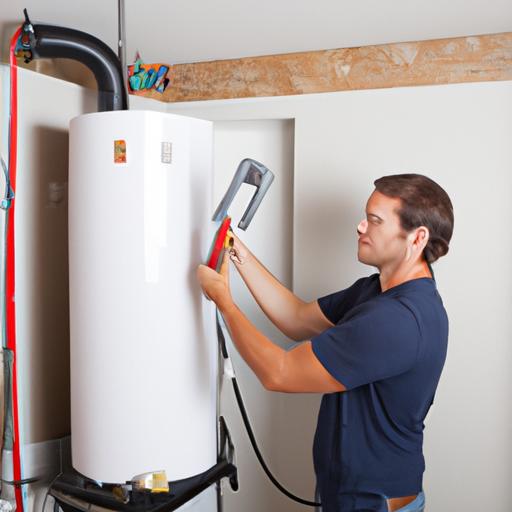Introduction
Are you tired of running out of hot water in the middle of your shower? Electric tankless water heaters might just be the solution you’re looking for. These innovative appliances provide a continuous supply of hot water on demand, eliminating the need for a bulky storage tank.
Proper installation of an electric tankless water heater is crucial to ensure optimal performance and efficiency. Whether you’re looking to upgrade your current water heating system or install a new one, understanding the importance of correct installation is key to reaping the benefits of this modern technology. Stay tuned as I walk you through the process of installing an electric tankless water heater in your home.
Benefits of Installing an Electric Tankless Water Heater
Energy Efficiency
When it comes to energy consumption, electric tankless water heaters are top performers. Unlike traditional water heaters that constantly heat and store water, tankless models only heat water as needed. This on-demand heating method results in lower energy usage and reduced utility bills, making electric tankless water heaters a cost-effective and eco-friendly choice.
Unlimited Hot Water Supply
Say goodbye to cold showers and waiting for the water to heat up with an electric tankless water heater. With this system, you can enjoy a continuous supply of hot water on demand. Whether you have a large family or guests staying over, you can rest assured that everyone will have access to hot water whenever they need it.
Space-Saving Design
Traditional water heaters can take up a significant amount of space in your home, especially if you have a storage tank model. Electric tankless water heaters, on the other hand, have a compact and sleek design that takes up minimal space. This makes them ideal for homes with limited storage space or for those looking to optimize their living area.
Step-by-Step Guide to Installing an Electric Tankless Water Heater
A. Turning off the Power Supply
Before beginning the installation process, it is crucial to ensure the power supply to the area where the electric tankless water heater will be installed is turned off. This step is essential for your safety and the proper functioning of the appliance.
B. Mounting the Water Heater
Once the power supply is turned off, the next step is to mount the electric tankless water heater in the designated location. Make sure to follow the manufacturer’s instructions regarding the proper placement and mounting of the unit to ensure optimal performance.
C. Connecting the Water Lines
After securely mounting the water heater, the next step is to connect the water lines. Ensure that the water inlet and outlet connections are properly attached, using appropriate plumbing materials to prevent leaks and ensure a steady flow of water through the unit.
D. Connecting the Electrical Wiring
With the water lines in place, it’s time to connect the electrical wiring to the electric tankless water heater. Follow the manufacturer’s guidelines for wiring connections, ensuring that the unit is safely and correctly connected to the power source.
E. Testing the Water Heater
Once the water lines and electrical wiring are connected, it’s time to test the electric tankless water heater. Turn on the power supply and check for any leaks or issues with the unit’s operation. Conduct a test run to ensure that the water heater is functioning properly and providing hot water as expected.
Common Mistakes to Avoid During Installation
Incorrectly Sizing the Water Heater
One common mistake to avoid when installing an electric tankless water heater is incorrectly sizing the unit for your household’s needs. It’s essential to consider factors such as the number of fixtures in your home, the peak hot water demand, and the temperature rise required. Choosing a water heater that is too small can result in inadequate hot water supply, while one that is too large can lead to unnecessary energy consumption.
Improper Electrical Connections
Another critical aspect of installation is ensuring proper electrical connections. Electric tankless water heaters require a dedicated electrical circuit with the appropriate voltage and amperage capacity. Improper wiring can not only lead to performance issues but also pose a safety hazard. It’s essential to follow the manufacturer’s guidelines and hire a qualified electrician if needed to ensure a safe and reliable installation.
Not Following Manufacturer’s Instructions
One of the most common mistakes homeowners make during the installation process is not following the manufacturer’s instructions. Each electric tankless water heater model may have specific requirements and guidelines for installation, including mounting, plumbing connections, and electrical wiring. Ignoring these instructions can void the warranty and compromise the performance of the unit. Be sure to carefully read and adhere to the manufacturer’s recommendations to ensure a successful installation.
Conclusion
By now, you’ve learned about the benefits of installing an electric tankless water heater and the importance of proper installation for optimal performance. The energy efficiency, unlimited hot water supply, and space-saving design of these appliances make them a smart choice for homeowners looking to upgrade their water heating system.
Remember, when it comes to installing an electric tankless water heater, correct installation is key. Following the step-by-step guide outlined in this article will help you set up your water heater efficiently and effectively. With the right installation, you can enjoy endless hot water and lower energy bills in your home. Make the switch to an electric tankless water heater today and experience the convenience and comfort it brings.
